Are you interested in learning how to start a survival garden from scratch? You aren’t the only one.
The COVID-19 pandemic got a lot of us thinking about where our food comes from – and growing a garden is one of the best things you can do to improve your self-sufficiency.
Unlike raising livestock, growing a garden is something you can do practically anywhere. It’s possible to grow a self-sustaining garden even if you live in a small urban apartment!
Here are some tips to help you learn how to grow your own survival garden, even if you’re lacking that ubiquitous green thumb – or are on a limited budget.
How to Start a Survival Garden
Ready to start growing? Here are some tips to help you grow your own survival garden that will sustain you 365 days out of the year.
Related: How To Plant Your Orchard To Have Fruits All Year Round
1. Be Patient and Start Small
The first thing to remember when you’re starting a survival garden is to remember that Rome wasn’t built in a day.
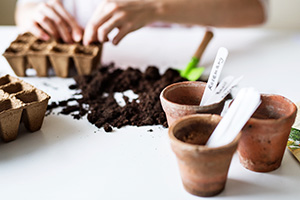
Don’t take on a massive garden in your first year, especially if you’re brand new to gardening. Instead, create a plan and start small.
Rather than sowing seeds for every single type of vegetable you can think of, just select the ones that you know you can easily grow.
And the ones that will offer the biggest “bang for your buck.” Think – storage crops and those that offer a massive yield for the amount of space that they take up (leafy greens come to mind).
Before you start planting, take the time to map out your survival garden. Sketch out a rough plan of where you will position the garden and what you will plant – and when.
2. Choose the Best Location
For the most part, a full sun location is best for the vast majority of crops. While there are a few, such as broccoli and spinach, that can grow well in shady conditions, most plants prefer at least six hours of sunlight per day.
It’s not just about light exposure when you’re selecting a planting location, though.
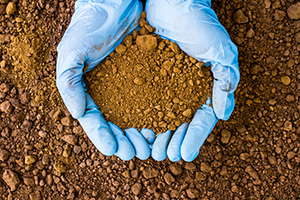
You also need to think of things like soil type and quality and slope. When given the choice, you probably won’t want to plant your survival garden on the side of a hill!
Instead, choose a flat, fertile spot in which to plant your garden.
How do you know if your soil is fertile? By conducting a soil test, of course! This should take place as part of the planning process for your garden.
Related: How to Adjust the pH in Soil and Water for Abundant Harvests
One other factor to consider when choosing a location is to make sure it is concealed from any prying eyes. In a survival situation, you don’t want all of your food sources out in the open. Instead, make sure it is hidden and protected from animal and human interests alike.
3. Pay Attention to the Season
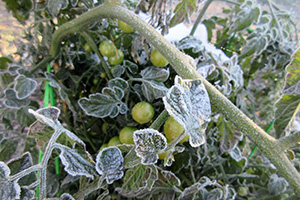
Consult the USDA growing zone list when choosing which plants you are going to grow.
Figure out your date of last and first frost, as this will give you an idea of when to plant. Remember, if a plant is not frost tolerant – like tomatoes or peppers – even a light frost will kill it.
4. Choose High-Calorie and Storage Crops
Salads are all fine and dandy, but when it comes to growing all of your own food for a survival situation, calories are key.
It’s a good idea to plant crops that are high in calories as well as those that have a long storage life (especially without refrigeration).
Some examples of crops to grow include:
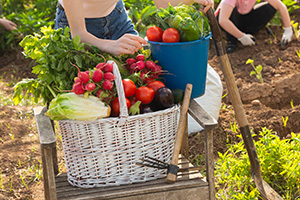 Potatoes
Potatoes- Sweet potatoes
- Winter squash
- Carrots
- Turnips
- Tomatoes
- Soybeans
- Chickpeas
- Sunflower seeds
- Peanuts
- Rutabagas
5. Incorporate Perennials
Believe it or not, even gardeners who live in the coldest growing zones can grow edible perennial crops. Most of these are herbs but there are certain fruits and vegetables you can grow, too.
The beauty of growing perennials rather than exclusively annuals is that you won’t have to worry about saving or sowing seeds – the crops will pop back up on their own.
Related: How to Plant a Perennial Food Garden – Fruits & Veggies That Will Keep Coming Back Year After Year
Some good options include:
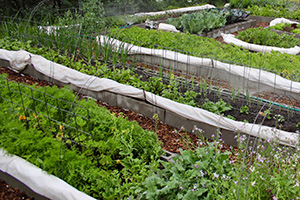 Thyme
Thyme- Oregano
- Chives
- Rosemary
- Sage
- Asparagus
- Raspberries
- Goji berries
- Horseradish
- Ramps
- Watercress
- Strawberries
Again, the extent to which a plant is perennial will depend on your growing zone, so have this information handy when you are deciding what to plant.
6. Save Seeds
The best way to create a self-sustaining garden is to make sure it’s cyclical in nature.
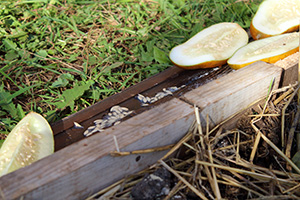
Don’t rely on the store to buy seeds.
Instead, save seeds from this year’s plants to replant next year.
This is easiest when you are growing single varieties of each plant to avoid undesired cross-pollination.
To do this, let the plants mature completely, then remove the seeds from the fruits and dry them. They should last for years.
7. Try Some Indoor or Container Growing
Don’t assume that your gardening efforts are restricted to the frost-free months alone. You can also grow your own survival garden indoors.
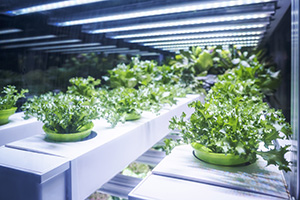
By doing this, you can grow anything at any time – not just when they’re in season.
A few grow lights and the occasional splash of water are all you need to keep your indoor-grown plants happy!
Plus, there are all kinds of plants (like peppers) that thrive in containers, so don’t shy away from this growing technique.
8. Manage Your Survival Garden
Once you’ve decided what to grow and have your plants in the ground, that doesn’t mean that your work is done. In fact, you still have your work cut out for you – you’ve got to care for your garden until you’re ready to harvest!
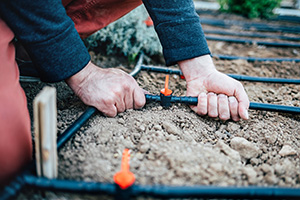 You’ll have to add watering, weeding, and fertilizing to your list of weekly and daily chores.
You’ll have to add watering, weeding, and fertilizing to your list of weekly and daily chores.
Most plants require around an inch or two of water per week, which you’ll need to provide via irrigation if it doesn’t occur during natural rainfall.
Adding a layer of mulch around your plants (at a depth of around two to three inches) can help suppress weeds and moderate soil moisture.
9. Don’t Forget Medicinal Plants
When it comes to growing a survival garden, it’s not just edible crops that you should consider growing. You may also want to incorporate some medicinal plants. Some good options include:
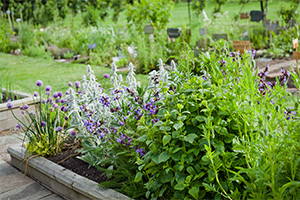 Basil
Basil- Bay leaves
- Coriander
- Lavender
- Mint
- Chamomile
- Oregano
- Thyme
- Aloe vera
10. Preserve, Preserve, Preserve
Your survival garden doesn’t stop being useful once the first frost hits and your plants are winter killed.
By learning how to preserve your own food, you can make it last all year long.
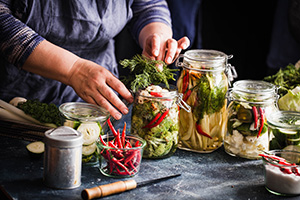
Learn how to can, dehydrate, and ferment. Contrary to popular belief, you don’t need a lot of fancy equipment to do any of these tasks.
You can use an old stockpot as a water bath canner and dehydrate in the sun or with your oven.
What Should Every Survivalist Grow in the Backyard?
You can grow just about any kind of food that you enjoy and that you know will grow well in your unique growing conditions.
However, the high-calorie and storage crops listed above are some of your best options (think things like potatoes, sweet potatoes, and onions).
Some other good options include corn, beans, kale, lentils, and cabbage, all of which store remarkably well on their own or with a few extra steps thrown in (like canning).
Once you learn how to start a survival garden from scratch and get the hang of caring for your garden, there’s no limit to what you will be able to produce for yourself – and for your family.
You may also like:
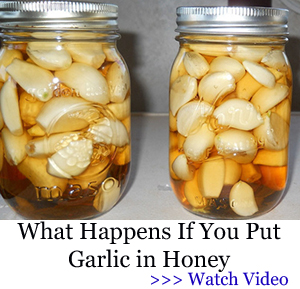 DIY Punji Stick Traps To Defend Your Home
DIY Punji Stick Traps To Defend Your Home
Stop Spending Money At The Pharmacy By Growing These 10 Plants (Video)

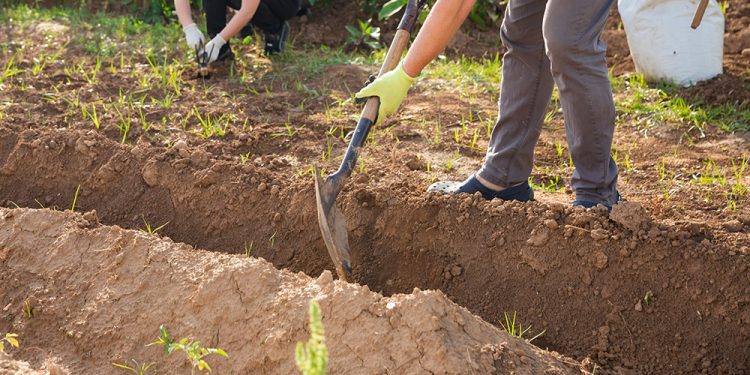













Raised beds will become the standard for most people.
1 it helps from having to bend over all the time and helps with older people.
2 you can get decent soil put in the beds and don’t have to deal with the issues with your lousy soil.
3 fencing that keeps your chickens and the deer out will be critical as well.
basic concern with new garden spaces and root crops >>> if you carve your garden out of grassed or other dense vegetation the earth bearing insects are heavy – could have major problems and a dismal crop …
if possible, it’s best to plant surface crops for the first few seasons and rotate in the taters and beets/rutabagas/turnips on a smaller trial basis ….
Illini Warrior please tell us your Grow Zone and what you have grown THIS Year in your Garden.
You’ve repeated this same comment on now two articles and again I ponder HOW the pioneers managed to survive a “Few Seasons” READ a Few YEARS with out their root crops.
Personally I USE Potatoes as my SOD BUSTING garden. They are quite capable of doing a decent harvest in grassed areas,
You confirmed my thinking. It seems as if anything I plant or try to grow must send out a signal to every bug in the neighborhood that says “come and get it!”
I am a very very Novice Gardener.
I have a greenhouse and started seeds this year and also tried some aquaponics.
I can attest to the FACT that ,” some growlights and a splash of water “, is NOT all that keeps plants happy!!
Kinda reminds me of Bloombergs remark that it takes no skill to be a farmer.
I’d like to see Red or ClergyLady’s remarks and maybe an article from them or Anyone who is walking the walk of growing successful gardens.
I need all the help I can get, but this article left me “withering on the vine.”
Peace,
MadFab
Madfab I first went over to MSB to search for survival gardening and was surprised there was nothing directly related.
I am a fairly successful gardener not a Master Gardner but I do pretty well. Zone 5B
Step 1 Know your Grow Zone. Know the EXPECTED Last Frost in Spring and First Frost in Fall. Expected because Ma Nature is a trickster. That Gives you your expected Growing Days.
Step Two what will successfully grow in that Zone and growing days. I personally love to PUSH the Envelope as I grow Sweet Potatoes in NH and I have learned tricks to make it happen.
Step three know your EXPECTED Rainfall Patterns. For example in my area of NH I know from historical records (ask the Ag College for this) that I WILL have to irrigate in late June and month of July. JUST looking at Annual Rainfall I should have plenty of water BUT Half of that is Winter SNOW. I COLLECT Rainwater from my roof into a pair of IBC totes that are uphill from my garden and added a hose bib so I can water my June-July Garden from April-May’s abundant rainfall.
Step four know your soil. As a General Rule of Thumb IF Dandelions will grow there you have a good place for gardens. BTW Dandelions are NOT WEEDS. They were IMPORTED by colonists as a Spring Tonic HERB. ALL Parts of Dandelions are edible and quite healthy IF NOT Sprayed with various toxic stuff we love to use to keep a “Pristine Lawn” (READ Sterile Food Desert).
A Scotts yard or other versions of Roundup and such are DEATH to a survival garden. Takes YEARS to breakdown and kills off most Non-GMO food plants.
SO BE CAREFUL where you scrounge your compost materials as again from a Scotts Yard it will destroy your heirloom Plants.
I could go on but this is a comment not an article.
I wonder what Claude will trade for a long article about someone’s real life gardening efforts in Zone 5B NH.
Michael,
I too scour MSB older article, and here also. Lots of info I wasn’t looking for and a couple hours lost, lol.
I am in Northwest WA. About an hour from the Canadian border. Zone 5b also. I use raised beds due to a bad back. Try very hard to not use chemicals in the yard as my chickens love to have a walk about.
Have a county extension about 20 miles away and they , unfortunately know me by name. But I always utilize the info they have given me. Excellent source of info and experience.
I was disappointed in the article today, but that isn’t anyone’s fault but mine.
Thanks for the suggestions and feedback, Michael
Have a good evening.
Peace,
MadFab
End of the growing season here in Connecticut, overall a decent year. Let some of my better producing plants go to seed for next season. I have a 15′ x 20′ garden and have already bought some grow bags and some heirloom seeds to expand next season. One thing I would have added to the article is composting, it’s a great way to feed your garden with little more than food scraps, lawn clippings and leaves. I feed my garden in the spring once with blood and bone meal when I’m planting, then use my compost or compost “tea” as needed. Your plants will let you know when they need a little help. Can’t wait for next Spring!
Because of the lack of space, many folks here have Planted roof gardens on the flat roofs on their houses and garages. They have reserved actual garden space for fruit trees. Some even have even set up beehives penthouses on their roof tops.